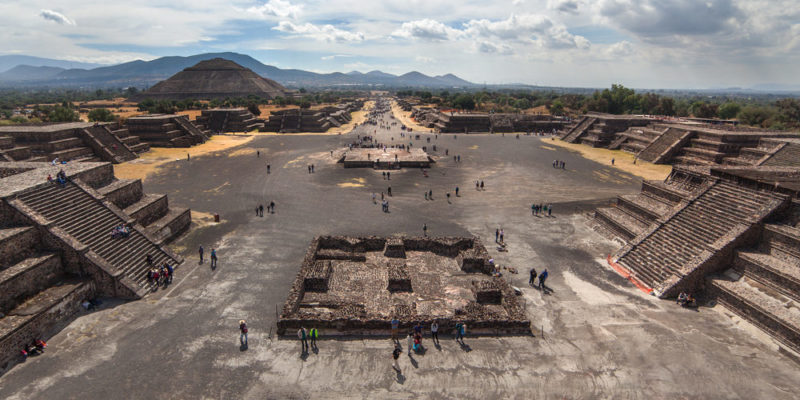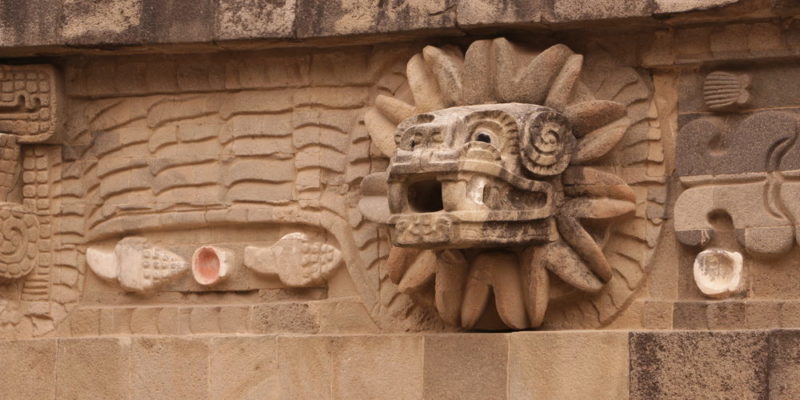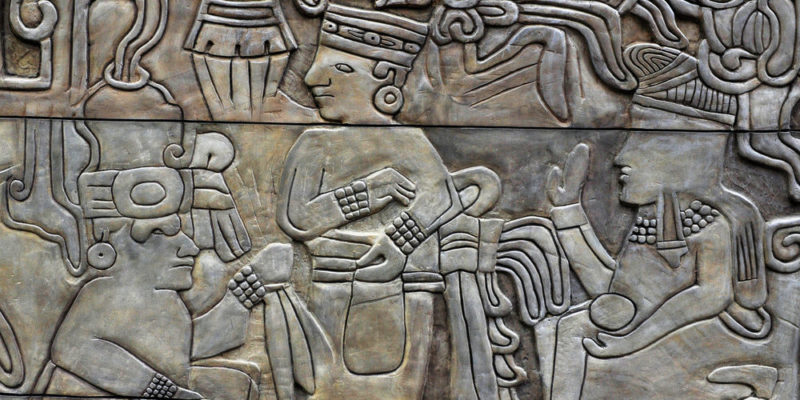We explain what Teotihuacan culture is, what its economy and social structure are like. In addition, its general characteristics, art and more.
What was the Teotihuacan culture?
The Teotihuacan culture was one of the many pre-Columbian Mesoamerican civilizations that lived between the 1st and 8th centuries AD in the territory of present-day Mexico , specifically in the area surrounding the remains of the city of Teotihuacán, northeast of the Mexican valley.
Even so, the influence of this culture on its Mesoamerican neighbors is known , judging by the presence of its imaginary in other archaeological centers. In fact, Teotihuacán was an important pilgrimage center for the later Aztec culture , who saw in the abandoned city a point of religious revelations.
It is estimated that this city was the equivalent of the ancient and enormous imperial Rome in its context and influence, judging by clearly Teotihuacan motifs in the ruins of Tikal or Chichen Itzá.
Geographic location of the Teotihuacan culture
The Teotihuacan civilization occupied the northeast area of the current Mexican valley , specifically between the municipalities of Teotihuacán and San Martín de las Pirámides, 78 kilometers from Mexico City. This area was declared a World Heritage Site by UNESCO in 1987.
Economy of the Teotihuacan culture

The Teotihuacan economy was fundamentally agricultural , with much commercial exchange with neighboring cultures during its heyday. Beans, corn, amaranth, peppers, tomatoes and cereals were cultivated on terraces using irrigation, although this method proved insufficient to sustain a metropolis as large as Teotihuacán promised to be in its peak moments.
This suggests the need for gathering, hunting and animal husbandry , as well as the extraction of minerals such as obsidian, clay, basalt and tin, which were used in crafts, architecture or commercial exchange with other peoples.
Trade , above all, must have occupied an important area of Teotihuacan activities, which would have given them regional importance and made them recipients of other elements present in the ruins, such as jade, turquoise, cinnabar, hematite.
Social structure of the Teotihuacan culture
The society of this culture was elitist: it was hierarchized through well-differentiated classes , with the military nobility at the top, followed by a caste of officials and priests of aristocratic origin, in charge of urban and population administration. In last place was the stratum of farmers, artisans and merchants.
Political organization of the Teotihuacan culture
The Teotihuacan culture was governed theocratically, that is, through the government of its religious leaders . This implies a military and religious ruling elite, whose leadership was exercised through religious-scientific knowledge of the culture and frequent rites that held the social order together.
The big city

Teotihuacán was one of the first important cities in the Americas , whose peak is estimated between the 3rd and 5th centuries AD (Early Classic Period), with a population of 100,000 to 200,000 inhabitants and an area of almost 21 km 2 . It is likely that it was a huge center of cultural and commercial exchange.
It was gradually abandoned around the year 750 AD , for unknown reasons, although it is speculated that political instability, the depletion of resources or the fierce increase in wars could have been the cause. The truth is that at the beginning of the 8th century it was already an abandoned city.
Exodus from the Teotihuacan culture
Much evidence of contact between the Teotihuacan culture and other Mesoamerican cultures points, among other things, to the possible mass migration that the great city of Teotihuacán witnessed during its decline phase.
Ceramic remains, murals, and similar icons outside the area of Teotihuacan domain show the presence of migratory groups in the east of Anahuác, the north of Morelos, the valley of Tlaxcala, and Toluca.
The mystery of Teotihuacan culture

Little is known about the Teotihuacan ethnic group, since much of what remains or even the names by which its ruins are known come from the Mexica (Aztec) culture, which occupied Teotihuacán long after it was abandoned, consecrating its ruins to pilgrimage religious.
The name, in fact, comes from Nahuatl and means " Place where the gods were born ". According to their worldview, the original inhabitants of the city had been the quinametzin , a race of giants prior to human existence.
The language of its original settlers and what name they might have given it are unknown , although much has been discovered about their society at its height , thanks to archaeological excavations in the area. Some theories point to Otomí, Mazahua, Totonac, Tepehua or Chocolteco cultures.
Religion of the Teotihuacan culture

Teotihuacan mythology was similar to that of other pre-Columbian peoples in the area: polytheistic, with a strong heritage from earlier cultures (and legacy to later ones).
They worshiped the plumed serpent, Quetzalcóatl ; the god of rain and sowing, Tlaloc; the god of fire , Huehuetéotl; the god of heaven and earth, Tezcatlipoca; and their rites often involved sacrifices, both human and animal.
His sacred animals were the owl , the cougar, the eagle , the serpent .
Architecture of the Teotihuacan culture
Teotihuacan architecture was lavish in monuments, judging by the pyramids found in Teotihuacán (among them the third largest in the world) and its temples and ceremonial buildings , notoriously abundant in the city.
Its street systems, drainage systems and large squares are also noteworthy . They are considered to have had a strong influence from the Olmecs , considered the "mother" Mesoamerican civilization.
Arts of the Teotihuacan culture

Ceramics and mural painting were very frequent artistic manifestations in this culture, in which mythological scenes were commonly shown .
The murals generally accompanied important buildings , or were located on slopes, plinth panels and inside the pyramids, as well as in porches, rooms and corridors. This allows us to suppose the degree of religiosity of the Teotihuacan.
The above content published at Collaborative Research Group is for informational and educational purposes only and has been developed by referring to reliable sources and recommendations from technology experts. We do not have any contact with official entities nor do we intend to replace the information that they emit.
Cultural journalist with great interest in education and technological innovation in the classroom. The future passes through technology and it is already here. .
Leave a reply
Your email address will not be published. Required fields are marked *Recent post

Sport: What Is It, Types, Risks, Features, Characteristics and Examples

Dogs: Emergence, Features, Characteristics, Feeding and Breeds

Story: Definition, Elements, Structure, Features and Characteristics

